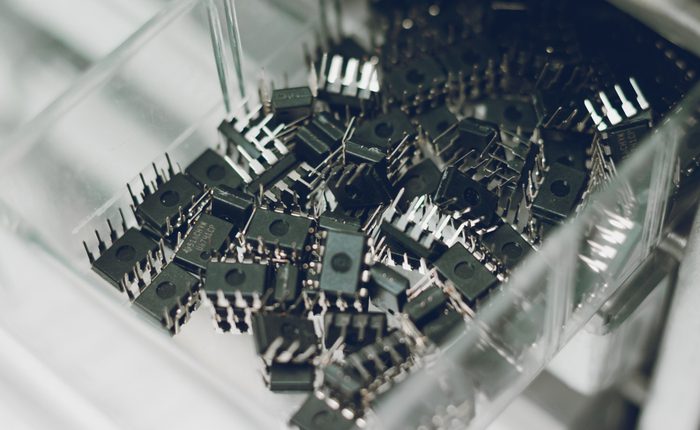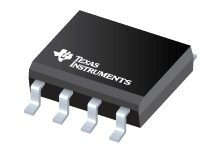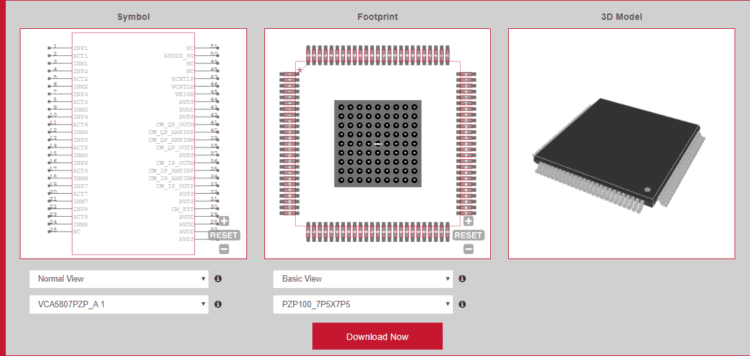
Who doesn’t have a drawer full of LM741 op-amp ICs?
Every engineer will develop an intimate relationship with op-amps during their electronics courses. These are fundamental circuits in analog electronics and are used as the building blocks for high-precision power systems, amplifiers, filters, and many other devices. You probably won’t be using the same op-amps you used in university for your production-grade devices, but the basic ideas behind these components have not changed over the past ~40 years.
If you’re working in the analog domain, no doubt you’ll need to select op-amp ICs for your system. These are typically used as amplifiers in analog systems, as filters/regulators in power systems, or as error detectors between an analog signal and a reference. There are plenty of applications for these fundamental components. Here’s how to select and locate the op-amp ICs you need for your next analog or mixed-signal system.
Common Op-amp ICs
Perhaps the most commonly used op-amp is the LM741, which was first manufactured by Fairchild Semiconductor. A comparable common op-amp is the LM324. These components are most likely found in university settings as educational tools, but they are still versatile for low-level DC and low frequency applications where speed is not a major issue. The open loop gain is up to 105, but the open-loop gain falls off at 6 dB/octave above 10 Hz, equating to a 1 MHz gain-bandwidth product. The LM386 is another common op-amp IC that finds its home in audio applications. It can safely drive loads from 4 to 32 Ohms with kHz frequencies with reasonable gain and low noise.
Although the above components are common and low-cost, these components are not often used in production-grade products, especially for advanced applications. Designs that need to respond quickly to input voltage changes, operate at high frequencies, receive higher input voltage levels, or output with higher gain need more specialized components. The major manufacturers and other specialty manufacturers have taken time to create op-amp ICs that are specialized for these various tasks. Op-amp ICs that are specialized for wireless, high power, and low noise are quite common.

TI’s Dual-channel amplifier LM358B
Important Specifications of Op-amp ICs
Not all op-amp ICs are universal for every application, but the typical specifications you should examine are universal. Here are some important technical specifications you’ll find in datasheets for op-amp ICs:
- Maximum input/output voltage ratings. Once your input voltage exceeds a certain threshold, the output will saturate and will stop increasing.
- Single-ended or differential output. Some op-amp ICs and programmable amplifier circuits can be used to drive differential components. This is commonly used in differential ADCs for data acquisition from low-level analog signals.
- Open-loop gain. You can never really measure the open-loop gain, but you will approach the open-loop gain as you continue increasing the resistance in the feedback loop. This is the theoretical maximum gain you would be able to achieve with the op-amp.
- Gain-bandwidth product. This tells you how the bandwidth of the op-amp falls off at progressively higher frequencies. Larger gain-bandwidth product means that the op-amp can be used with higher frequencies, but at lower gain.
- Slew rate. This is basically a measure of the amplifier’s transient response. It tells you how fast the op-amp responds to a change in the voltage level at one of the inputs and is normally quoted in V/μs. A larger number means a larger voltage change over a given time period; these values can range anywhere from 1 mV/μs to over 1000 V/μs.
- Common-mode rejection ratio. This is the ratio of differential noise to common-mode noise amplification and is normally quoted in dB. A larger number means greater immunity to common-mode noise.
- Quiescent current. This is simply the current drawn by the device when it is not switching or driving a load. This should be as low as possible for battery-powered devices, or for a device that will not be used frequently.
Modern amplifier ICs are based on op-amps, and they typically include a number of other features. A great example is the programmable gain amplifier shown below. The gain can be programmed externally over SPI. It also provides high bandwidth (2.4 GHz), 8 channels, and integrated power management modes.

Schematic symbol, PCB footprint, and 3D model for the VCA5807 from Texas Instruments.
Where to Find Common Op-amp ICs
The number of op-amp ICs on the market is huge and the built-in libraries in your CAD software won’t always include the components you need. As a designer, you need access to a service that provides verified component models in vendor-specific and vendor-neutral formats, including schematic symbols, PCB footprints, and 3D models for MCAD applications. If you’re designing an advanced system that needs evaluation before prototyping, you’ll also need access to SPICE models for your components.
If you use an electronic parts search engine, you can find common and specialty op-amp ICs for your next PCB, and you can access sourcing information from these components. You’ll have access to the following information and much more:
- Part specifications. Basic op-amp specifications like output voltage/current limits and mounting style can be seen in search results.
- Available component models. If you can access CAD models for components, you can quickly bring a new component into your design. You’ll avoid some careless mistakes that can happen when creating component models from scratch.
- Datasheets and sourcing information. You can quickly access datasheets directly from the manufacturer and sourcing information from major distributors. You can quickly compare prices, minimum order quantities, and lead times.
When you’re looking for op-amp ICs and other components for your next analog or mixed-signal system, you can find the CAD models you need in vendor-specific and vendor-neutral formats with the parts search features in Ultra Librarian. You’ll have access to verified CAD models that can be imported into popular ECAD applications, and you can view sourcing information from worldwide distributors. All component data on Ultra Librarian can be accessed at no cost and is verified from component manufacturers.
If you’re looking for CAD and SPICE models for common components, Ultra Librarian helps by compiling all your sourcing and component information in one place. Working with Ultra Librarian sets up your team for success to ensure any design is going through production and validation with accurate models and footprints to work from. Register today!








